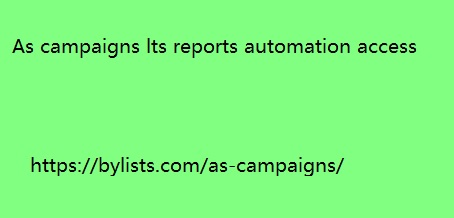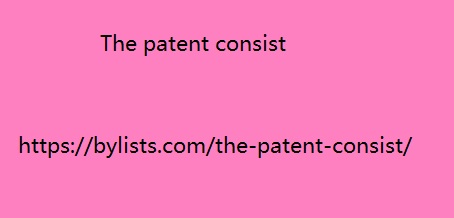This article explores industry standards for valid
In today’s data-driven world, maintaining accurate and valid contact information within your database is crucial for successful customer relationships and efficient business operations. However, ensuring consistent record validity can be a challenge across diverse industries. This article explores industry standards for valid contact records, offering valuable insights and best practices for maintaining clean data within your database.
Why Valid Contact Records Matter:
Inaccurate or outdated contact information That I am looking at that product can lead to a multitude of problems, including:
- Wasted Resources: Marketing campaigns and outreach efforts targeting invalid contacts are a waste of time and resources.
- Delivery Failures: Important communications like invoices or order confirmations might not reach intended recipients.
- Damaged Reputation: Bounced emails and undelivered packages create a negative user experience.
- Regulatory Compliance Issues: Depending on your industry, data privacy regulations might mandate specific data maintenance practices.
Industry Standards for Valid Contact Records:
While specific standards might vary slightly across industries, some core principles apply:
- Basic Information: Ensure essential fields like name, email address, phone number, and company details are accurate and complete.
- Data Format Consistency: Standardize data formats for fields like phone numbers (e.g., international dialing codes) and postal addresses (e.g., state/province abbreviations).
- Data Validation: Implement validation rules to prevent invalid entries during data input, such as improper email syntax or incomplete addresses.
- Regular Data Cleansing: Schedule regular data cleansing processes to identify and remove duplicate entries, outdated information, or inactive contacts.
- Third-Party Verification Services: Consider utilizing third-party verification services for specific fields like email addresses to improve data accuracy.
Best Practices for Maintaining Clean Contact Records:
Here are some actionable tips to maintain valid contact information in your database:
- Double Opt-In for Email Subscribers: Require email subscribers to confirm their email address through a double opt-in process to reduce the risk of typos or invalid entries.
- Provide Update Mechanisms: Offer users clear and easy ways to update their contact information within your system.
-
Track Opt-Outs and Bounces:

- Monitor bounced emails and opt-out requests b2b lead generation pdf to identify invalid contact information and remove it promptly.
- Leverage Data Enrichment Tools: Explore data enrichment tools that can append missing information or verify existing data points.
- Employee Training: Educate your team on the importance of data quality and best practices for data entry and validation.
Conclusion:
Maintaining valid contact records within industry standard databases is an ongoing process. By understanding the importance of data accuracy, familiarizing yourself with industry standards, and implementing best practices for data cleansing and verification, you can ensure your database remains a valuable asset for effective communication, targeted marketing, and efficient business operations. Remember, clean data empowers your business to engage with customers on a deeper level, drive sales, and ultimately achieve success.
UTK contact you need
The University of Tennessee, Knoxville (UTK) boasts Unveiling the UTK Contact a vast network of faculty, staff, students, and departments. But navigating this extensive network to find the right person can feel like wandering through a maze. Fear not, intrepid seeker! This guide equips you with effective strategies to locate the UTK contact you need, ensuring your communication reaches the intended recipient.
Official UTK Resources: A Starting Point for Success
- UTK Directory: The official UTK Directory Sensory Impairments Sensory serves as a comprehensive online database Search by name, department, or keyword to locate faculty, staff, and students.
- UTK Phonebook: While not as comprehensive as the online directory, the UTK phonebook offers a downloadable PDF listing phone numbers for departments and administrative offices.
Beyond Official Resources: Utilizing Additional Channels
- Department Websites: Many UTK departments maintain individual websites that often list faculty and staff contact information including phone numbers and email addresses.
- UTK Search Engine: The UTK website search engine (crawls university webpages. Enter a specific name or department to find relevant contact details.
- UTK Email Suffix: UTK email addresses often follow a standardized format ([email address removed]). If you know someone’s full name, try constructing their email address for direct communication.
Advanced Strategies for Elusive Contacts
- UTK Operator: If your search proves unsuccessful, consider contacting the UTK operator at (865) 974-1000. They can assist you in finding the appropriate department or office to reach your desired contact.
- Social Media Platforms: Some UTK faculty and staff might have professional profiles on LinkedIn or departmental social media pages. These profiles might include contact details or ways to send direct messages.
Remember When Searching:

- Accuracy Matters: Double-check b2b lead generation on linkedin names and spellings to ensure accurate search results.
- Department Context: Knowing the relevant department of your target contact can significantly streamline your search efforts.
Conclusion:
Finding the right UTK contact doesn’t have to be a daunting task. By utilizing the official resources, exploring additional channels, and employing some advanced strategies, you can navigate the UTK network with confidence. Remember, a little research can go a long way in ensuring your communication reaches the intended recipient at UTK. So, equip yourself with these strategies and conquer the UTK contact maze!
Where the utility contact system database
Our modern lives are fueled by essential utilities Powering Efficiency: Unveiling like electricity, water, and gas. But managing these services often involves navigating a maze of contact information and account details. This is where the utility contact system database comes in, playing a crucial role behind the scenes in ensuring seamless utility management for both customers and providers.
Demystifying the Utility Contact System Database
The utility contact system database The patent consist serves as a centralized repository for all customer information relevant to utility services. It typically stores a range of data points, including:
- Customer Accounts: Account numbers, service addresses, billing information, and contact details.
- Service History: Track records of service requests, meter readings, maintenance logs, and past billing statements.
- Payment Information: Payment methods, history of transactions, and any outstanding balances.
- Communication Preferences: Preferred communication channels (email, phone, text) for notifications and updates.
Benefits of a Robust Utility Contact System Database
For both utility providers and customers, a well-maintained database offers numerous advantages:
- Enhanced Customer Service: Customer service representatives can access all relevant information readily, leading to faster resolution of queries and improved customer satisfaction.
- Streamlined Billing and Payments: Accurate account information ensures correct billing and simplifies the payment process for customers.
- Efficient Service Dispatch: In case of outages or emergencies, dispatchers can quickly locate affected areas and mobilize service crews effectively.
- Improved Outage Management: Historical data within the database helps analyze outage patterns and plan for preventive maintenance, reducing downtime and inconvenience for customers.
- Data-Driven Decisions: Utility providers can leverage data to understand customer needs, optimize service offerings, and target resources efficiently.
Security Considerations for Utility Contact System Databases
Given the sensitive nature of customer information, security is paramount. Utility companies must prioritize robust security measures:
- Data Encryption: Encrypting stored data ensures unauthorized access cannot decrypt sensitive information.
- Access Controls: Implementing access controls restricts access to the database only for authorized personnel with the necessary permissions.
- Regular Backups: Maintaining regular backups safeguards data in case of system failures or security breaches.
The Future of Utility Contact System Databases
The future of utility contact system databases is likely to involve:
- Integration with Smart Grid Technologies: As smart b2b lead generation niches meters and other advanced technologies become more prevalent, the database will integrate this data, enabling real-time monitoring and proactive service management.
- Enhanced Data Analytics: Utilizing advanced data analytics tools, utility companies can gain deeper insights into customer behavior and usage patterns, allowing for personalized service offerings and improved resource allocation.
- Increased Customer Self-Service Options: Customers will likely have greater control over their accounts through online portals connected to the database, enabling them to view bills, submit meter readings, and manage service requests independently.
Conclusion:
The utility contact system database plays a vital role in the smooth operation of our utility infrastructure. By ensuring its accuracy, security, and integration with evolving technologies, utility providers can empower both themselves and their customers for a more efficient and reliable utility service experience.
UPDB for personal information is not possibl
The Utah Population Database (UPDB) is a world-renowned resource for researchers in genetics, epidemiology, demography, and public health. However, due to its focus on privacy and protecting individual identities, contacting the UPDB for personal information is not possible. This article explores the purpose of the UPDB, its data access restrictions, and alternative resources for Utah-based genealogical research.
Understanding the Utah Population Database: A Powerful Research Tool
Established in the mid-1970s, the UPDB Sellers improve the shopping is a unique and comprehensive database linking extensive Utah family histories with demographic and medical information. This allows researchers to study:
- Genetic Traits: Identify families with a higher prevalence of specific diseases or analyze patterns of genetic inheritance.
- Disease Risk Factors: Investigate environmental or lifestyle factors contributing to health outcomes in specific populations.
- Demographic Trends: Analyze historical and current trends in fertility, mortality, and population shifts within Utah.
Data Access and Privacy: Protecting Individuals
The UPDB prioritizes the privacy of individuals represented in its data. Here’s why contacting them for personal information isn’t possible:
- Individual Consent: The UPDB doesn’t provide individual-level data.
- De-Identified Information: Data is anonymized and stripped of identifiers like names and addresses before being used for research projects.
- Restricted Access: Access to UPDB data is granted only to qualified researchers with approved research protocols that adhere to strict ethical guidelines.
Alternative Resources for Utah Genealogy Research:
While the UPDB isn’t suitable for personal information searches, various resources can aid your genealogical journey in Utah:
- Utah State Archives: This online archive houses historical records like birth certificates, marriage licenses, and death certificates.
- FamilySearch: A free resource offering access to historical records, census data, and genealogical tools.
-
Utah Genealogical Society:

- This non-profit organization provides b2b lead generation methods resources, workshops, and assistance for researching Utah ancestors.
- Local County Courthouses: Many Utah counties maintain historical records like wills, probate documents, and property deeds.
Conclusion:
The Utah Population Database serves as a valuable tool for researchers studying health and demographics. While contacting the UPDB for personal information isn’t an option due to its focus on privacy, numerous alternative resources are available to assist you in your Utah-based genealogical research. By exploring these resources, you can embark on a fascinating journey to uncover your family history within the rich tapestry of Utah’s past.
While basic database storage exists
Contact Form 7 (CF7) is a WordPress staple, allowing Beyond Basic: Unveiling you to create user-friendly contact forms. But what happens to those submissions after they’re sent? While basic database storage exists, advanced contact form database plugins offer a deeper level of functionality, transforming your data from passive storage to a strategic asset. This article explores the limitations of basic databases and dives into the benefits and features of advanced contact form database plugins for CF7, empowering you to unlock the true potential of your customer data.
Beyond the Basics: Limitations of Simple Database Solutions
Some plugins offer basic database Comparison and suggestions of other browsers storage for CF7 submissions. While this is a step up from text files, it might not be enough:
- Limited Features: Basic plugins often lack advanced functionalities like data filtering by specific fields, conditional search criteria, or exporting data in various formats.
- Restricted Integrations: Integration with other tools like email marketing platforms or CRM systems might be limited, hindering data usage for targeted communication.
- Scalability Concerns: These plugins might not scale effectively with an influx of submissions, potentially impacting performance or data integrity.
Advanced Contact Form Database Plugins: Unlocking Functionality
Advanced contact form database plugins for CF7 offer a richer feature set, allowing you to manage and utilize your data more effectively:
- Powerful Search and Filtering: Search your form data by specific fields, dates, keywords, or even combine criteria for pinpoint accuracy.
- Conditional Logic in Searches: Refine your searches using conditional logic. For example, search for submissions containing a specific keyword in the “message” field and originating from a particular location (identified by a zip code field).
- Seamless Integrations: Integrate your form data with various marketing tools like email marketing platforms, CRM systems, or analytics software for a holistic view of your customer journey.
- Customizable Reports and Exports: Generate detailed reports with insightful data visualizations and export your data in different formats (CSV, Excel) for further analysis in other platforms.
- Advanced Data Management: Benefit from features like deduplication to eliminate duplicate entries, data validation to ensure information accuracy, and user access controls to manage data security.
Examples of How Advanced Contact Form Database Plugins Can Benefit Your Business:
- Targeted Marketing Campaigns: Segment your contacts based on specific criteria gleaned from form data and send highly targeted email campaigns with personalized offers or content.
- Improved Sales Follow-Up: Access customer purchase history (captured through forms) and tailor your sales follow-up strategy based on their specific needs and interests.
- Data-Driven Decision Making: Analyze form data to identify trends, customer demographics, and areas for improvement on your website or contact forms themselves.
- Enhanced Customer Service: Access past interactions and customer data to personalize service experiences and address customer concerns more effectively.
Popular Advanced Contact Form Database Plugins for CF7
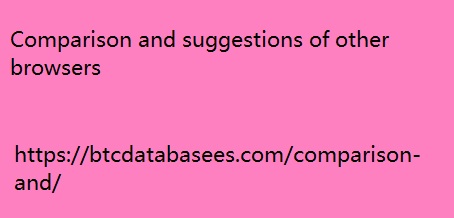
- Gravity Forms: This premium plugin Effective Lead Generation Strategies for Interior Designers offers a drag-and-drop form builder, advanced database storage capabilities, and integrations with various CRM and marketing platforms.
- WPForms: While offering a free version, the premium version of WPForms boasts advanced database functionalities, integrations, and conditional logic features.
- Ninja Forms: This premium plugin features powerful database management tools, conditional logic for submissions, and integrations with popular marketing and CRM platforms.
Choosing the Right Plugin: Aligning with Your Needs
Several factors come into play when selecting an advanced contact form database plugin:
- Features: Evaluate the specific features offered by each plugin and ensure they align with your data management and communication needs.
- Budget: Consider the pricing structure (free vs. premium) and choose a plugin that fits your budget.
- Ease of Use: Select a plugin with a user-friendly interface that aligns with your technical expertise.
- Scalability: Consider your anticipated data volume and choose a plugin that can handle your current and future submission needs.
Conclusion:
Upgrading from basic database storage to an advanced contact form database plugin for CF7 empowers you to transform your data into a strategic asset. With powerful search, filtering, integration capabilities, and advanced reporting tools, you can gain valuable customer insights, fuel targeted marketing campaigns, and ultimately drive business growth. So, go beyond the basics and embrace the power of advanced contact form database plugins to unlock the true potential hidden within your customer interactions.
But what if you could bridge the gap between them
Contact Form 7 empowers you to create user-friendly Connecting Seamlessly: Integrating contact forms on your WordPress website. HubSpot, a powerful CRM platform, excels at managing customer interactions and leads. ? This article explores integrating Contact Form 7 with HubSpot, allowing you to seamlessly capture leads and manage them within your HubSpot CRM system.
The Power of Combining Forces: Streamlining Lead Management
Using Contact Form 7 and HubSpot Contribution to the website’s link profile and its importance for SEO independently offers benefits. However, integrating them unlocks a new level of efficiency:
- Automated Lead Capture: Form submissions from Contact Form 7 automatically populate CRM records in HubSpot, eliminating manual data entry and ensuring timely capture of leads.
- Enhanced Lead Management: Access all your leads – captured through forms or other channels – within a centralized HubSpot CRM platform. Manage interactions, track progress, and nurture leads more effectively.
- Data Enrichment: HubSpot can automatically enrich lead data with additional information based on email addresses, providing valuable insights into potential customers.
Integration Methods: Bridging the Gap Between Contact Form 7 and HubSpot
Here are two primary methods for integrating Contact Form 7 and HubSpot:
1. Using a Free Plugin:
Several free plugins facilitate the integration, such as “CF7 HubSpot” or “HubSpot Contact Form 7.” These plugins handle the data transfer between Contact Form 7 submissions and HubSpot, ensuring lead information flows smoothly.
2. Custom Development:
For advanced users or those requiring specific functionalities, custom development might be an option. This allows for more granular control over data mapping and integration workflows.
Popular Integration Plugins for Contact Form 7 and HubSpot:
- CF7 HubSpot: A user-friendly plugin that simplifies integration. Map form fields to corresponding HubSpot properties, test the connection, and automatically send form submissions to HubSpot.
- HubSpot Contact Form 7: Another user-friendly option offering form field mapping, lead nurturing automation triggers based on form submissions, and double opt-in functionality.
Choosing the Right Integration Method:
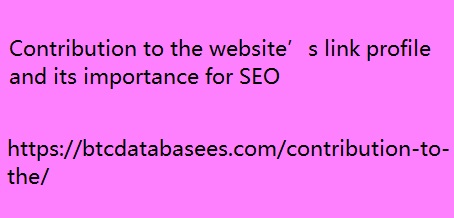
Consider these factors when deciding on an integration method:
- Technical Expertise: Free plugins Effective Lead Generation Strategies for IT Businesses offer ease of use, while custom development requires advanced technical knowledge.
- Customization Needs: If you require specific data mapping or advanced workflows, custom development might be necessary.
- Budget: Free plugins are cost-effective, while custom development comes with associated costs.
Beyond Integration: Optimizing Your Contact Form and HubSpot Workflow
- Leverage HubSpot Workflows: Automate tasks in HubSpot based on form submissions, such as sending follow-up emails or assigning leads to sales representatives.
- Utilize HubSpot Analytics: Analyze form data within HubSpot to understand user behavior and optimize your forms for better lead capture.
- Create Targeted Lead Nurturing Campaigns: Segment leads based on information captured through Contact Form 7 and tailor marketing campaigns to their specific needs.
Conclusion:
Integrating Contact Form 7 with HubSpot empowers you to capture leads efficiently on your WordPress website and manage them seamlessly within a powerful CRM platform. By leveraging free plugins or custom development solutions, you can streamline your lead management process, unlock valuable customer insights, and nurture leads more effectively for better business growth. Remember, assess your technical expertise, budget, and customization needs to choose the best integration method and unlock the full potential of this powerful combination.
Contact forms are the lifeblood
Contact forms are the lifeblood of any interactive Conquering Contact Chaos: Unveiling website. They allow visitors to reach out, ask questions, and express interest. But what happens to all that valuable data once submitted? This is where Contact Form Database Addons for WordPress come in. These powerful plugins bridge the gap, seamlessly storing your Contact Form 7 submissions in a centralized database, transforming them from fleeting emails into a treasure trove of information.
The Power of Contact Form Database Addons: Beyond Basic Forms
While Contact Form 7 excels at creating What should I do if my spouse user-friendly forms, it doesn’t natively store submissions in a database. Contact Form Database Addons address this challenge by offering a range of benefits:
- Organized Data Storage: Submissions are no longer lost in a sea of emails. They’re stored securely in your WordPress database, readily accessible for review, analysis, and future reference.
- Streamlined Workflow: No more manually copying and pasting data from emails. Database storage saves you time and effort, allowing you to focus on nurturing leads and building relationships.
- Advanced Data Management: Filter, search, and export your contact data to gain valuable insights. Unearth trends, identify potential customers, and personalize your marketing efforts.
- Reduced Errors: Eliminate the risk of losing data due to misplaced emails or forgotten notes. A well-maintained database ensures information security and accessibility.
Popular Contact Form Database Addons: Taking Control of Your Data
The WordPress plugin marketplace Conquering Contact Chaos: Unveiling offers a variety of Contact Form Database Addons, each catering to specific needs:
- CFDB7 (Contact Form 7 Database Addon): A lightweight and user-friendly option, CFDB7 is a popular choice for its ease of use. It allows you to view, manage, and export your form submissions in a clear and concise interface.
- WPForms: While not solely an extension, WPForms offers robust form creation functionalities alongside built-in database storage for form submissions. It’s a comprehensive solution ideal for users who want an all-in-one form and data management platform.
- Gravity Forms: Another powerhouse option, Gravity Forms provides advanced form creation tools coupled with powerful database features. You can manage, filter, and export your data with ease, making it ideal for complex form requirements.
Choosing the Right Contact Form Database Addon: Tailoring to Your Needs
With an array of options available, consider these factors when making your selection:
- Features: Do you need basic storage or advanced functionalities like conditional logic and data filtering?
- Ease of Use: Choose an addon with an intuitive interface that aligns with your technical expertise.
- Compatibility: Ensure the addon is compatible with your current WordPress version and Contact Form 7 version.
- Free vs. Paid: Some addons offer free versions with basic features, while paid versions provide extended functionality and support.
Beyond the Addon: Optimizing Your Contact Form and Database

- Form Design: Create clear and Effective Lead Generation for Manufacturers concise forms that capture the necessary information from users.
- Data Security: Implement security measures like strong passwords and user access controls to protect your valuable contact data.
- Data Retention Policy: Establish a clear policy for how long you will store contact information in accordance with relevant regulations.
Conclusion:
Contact Form Database Addons empower you to take control of your contact data and unlock its full potential. By exploring the benefits, popular plugins, and considerations mentioned above, you can find the ideal solution to transform your contact forms from simple data collection tools to powerful lead generation machines. Remember, a well-organized contact database is a valuable asset for any WordPress website. So, unlock the power of data and elevate your user interactions today!
Where all that valuable lead data gets
Contact Form 7 Database (CFDB7) is a popular WordPress Unveiling the Storage Secrets: Where Does plugin that simplifies managing inquiries from your website’s contact forms. But have you ever wondered where all that valuable lead data gets stored? This article delves into the storage mechanism of CFDB7, ensuring you understand where your data resides.
Demystifying Data Storage: Understanding WordPress and Databases
WordPress websites rely on a database This keyword mining is similar to the broad to store various types of information, including posts, pages, and user data. CFDB7 integrates seamlessly with this existing database system to store your contact form submissions.
Locating the CFDB7 Data: A Database Table
When you activate CFDB7, it creates a dedicated database table within your WordPress website’s database. The table name typically follows the format “wp_cf7dbplugin_submits” (the prefix “wp_” might differ depending on your WordPress configuration). This table houses all the data submitted through your Contact Form 7 forms.
Understanding the Data Structure: What’s Inside the Table
The CFDB7 database table stores various data points associated with each contact form submission. These typically include:
- Submitter Information: Name, email address, and any other fields you included in your contact form.
- Form Details: The specific form used to submit the contact information.
- Submission Date and Time: The timestamp of when the form was submitted.
- Additional Data (Optional): Depending on your Contact Form 7 configuration, CFDB7 might store uploaded files or additional form field entries.
Accessing Your Data: Exploring Your Options

While CFDB7 doesn’t offer a direct Effective Lead Generation Strategies for Photographers user interface to view individual submissions within the database table, you have a few options to access your data:
- CFDB7 Dashboard: The CFDB7 plugin itself provides a user-friendly dashboard within your WordPress admin panel. This displays a list of all submissions, allowing you to view and manage them efficiently.
- Database Management Tools: For advanced users, tools like phpMyAdmin (a common database management tool for WordPress) allow direct access to the database table and its contents. However, this approach requires technical knowledge.
Security Considerations: Protecting Your Valuable Data
Since CFDB7 stores data within your WordPress website’s database, it’s crucial to maintain strong security practices:
- Regular Backups: Regularly backing up your entire WordPress website, including the database, ensures you have a recovery plan in case of any issues.
- WordPress Security Updates: Keeping WordPress core, plugins, and themes updated with the latest security patches helps mitigate potential vulnerabilities.
- Strong Passwords: Utilize strong and unique passwords for your WordPress admin login and database access (if applicable).
Conclusion: Understanding Data Storage for Informed Decisions
By understanding how CFDB7 stores your contact form data, you gain greater control and peace of mind. Leverage the plugin’s dashboard for easy management, and prioritize website security to ensure your valuable leads are safe and accessible. Remember, with CFDB7, you can streamline your lead capture process while maintaining data security within your WordPress website.
This article delves into the key principles
A well-designed contact form database is the backbone of any successful contact form system. It ensures efficient storage, retrieval, and analysis of valuable user information submitted through your website’s contact forms. This article delves into the key principles of contact form database design, exploring the essential elements and providing best practices to optimize your database structure.
Why a Well-Designed Contact Form Database Matters:
While a simple text file might seem Users welcome this aspect with good words sufficient at first, a well-designed contact form database offers numerous advantages:
- Scalability: Accommodate a growing number of submissions without performance issues.
- Data Organization: Organize and categorize form data effectively for easy retrieval and analysis.
- Data Integrity: Minimize errors and maintain data consistency with proper data types and validation rules.
- Advanced Search & Filtering: Easily search and filter submissions based on specific criteria for targeted analysis.
- Integration with Other Systems: Seamlessly integrate your contact form data with other applications like CRM systems or marketing automation tools.
Essential Elements of a Contact Form Database Design:
Here are the core components of an effective contact form database:
- Tables: Each table represents a specific set of data, like a “Submissions” table to store form entries or a “Fields” table to define the different form fields.
- Columns: Each table is composed of columns that represent individual data points, such as “name,” “email,” “message,” and timestamps.
- Data Types: Define the data type for each column, specifying formats like text, email, date, or number. This ensures data accuracy and facilitates efficient storage.
- Primary Key: Each submission in your database should have a unique identifier, typically an auto-incrementing integer, serving as the primary key for efficient data retrieval.
- Relationships: Relationships between tables can be established using foreign keys. For example, a “Submissions” table might have a foreign key referencing a “Fields” table, linking specific submissions with their corresponding form fields and data values.
Best Practices for Contact Form Database Design:
Here are some key considerations for optimizing your contact form database design:
- Normalization: Break down complex data structures into smaller, more focused tables to minimize redundancy and improve data integrity.
- Data Validation: Implement validation rules to ensure users enter data in the correct format (e.g., email format for email fields).
- Indexing: Create indexes on frequently used columns to speed up data retrieval and search queries.
- Backup & Disaster Recovery: Establish a regular backup schedule and implement a disaster recovery plan to safeguard your valuable contact form data.
Additional Considerations:
- Security: Secure your contact Effective Lead Generation Strategies for SaaS Companies form database with appropriate access controls and encryption measures.
- Future Needs: Design your database with future growth in mind, considering potential additional form fields or functionalities.
- Compliance: Adhere to relevant data privacy regulations depending on your location and target audience.
Conclusion:
Investing time and effort into crafting an effective contact form database design reaps long-term benefits. By understanding the essential elements, best practices, and additional considerations, you can create a robust and secure foundation for managing your website’s valuable contact form submissions. Remember, a well-designed database empowers you to leverage the power of user-submitted information, ultimately leading to a more effective and user-friendly contact form experience.
Contact Form Advanced Database
(CFADB) is a WordPress plugin that unlocks Securing Your Submissions: User the power of database storage for your Contact Form 7 submissions. However, with great data comes great responsibility. This article explores how to configure user role access within CFADB, ensuring only authorized users can view, edit, or delete sensitive contact form data.
Why User Role Access Control Matters in CFADB:
While CFADB empowers you to store 15 Best Hill Stations Near Indore In 2024 You Must Visit! and manage form submissions, not everyone on your website needs complete access to this data. Here’s why user role access control is crucial:
- Enhanced Security: Restrict access to sensitive information. Prevent unauthorized users from viewing, modifying, or deleting valuable contact form entries.
- Improved Workflow Management: Assign specific access levels based on user roles. For example, content creators can view submissions, while administrators manage and export data.
- Reduced Risk of Errors: Limit the possibility of accidental data deletion or modification by users who shouldn’t be editing submissions.
Configuring User Role Access Control in CFADB:
CFADB offers a user-friendly interface for managing user roles and access permissions:
- Access the CFADB Settings: Locate the “Contact Form 7 -> Advanced Database” menu option within your WordPress dashboard.
- Navigate to User Roles: Within the CFADB settings, look for a section dedicated to user roles or access control.
- Define User Roles: CFADB typically utilizes existing WordPress user roles like Administrator, Editor, Author, Contributor, and Subscriber.
- Assign Permissions: For each user role, define the level of access they have to CFADB functionalities. Common options include:
- View Submissions: Allows users to see submitted form data without the ability to edit or delete them.
- Edit Submissions: Grants users the ability to modify existing submissions within the database.
- Delete Submissions: Enables users to permanently remove submissions from the database.
- Export Data: Provides users with the ability to export form submissions in a downloadable format like CSV.
Additional Considerations:
- Granular Control: Some CFADB versions might offer granular control over specific database fields. You can choose which data points each user role can access.
- Custom User Roles: If your WordPress site utilizes custom user roles, ensure CFADB integrates seamlessly with them for consistent access control.
- Plugin Documentation: Refer to the CFADB documentation or support resources for detailed instructions and troubleshooting assistance.
Benefits of Implementing User Role Access Control:

By implementing user role access Optimizing Your Lead Generation Conversion Funnel control in CFADB, you achieve several benefits:
- Streamlined Workflows: Assign access levels based on specific user responsibilities, promoting efficiency and clarity within your team.
- Data Security Optimization: Minimize the risk of unauthorized access or accidental data manipulation.
- Improved User Experience: Users only see information relevant to their role, creating a more focused and productive environment.
Conclusion:
User role access control in CFADB ensures your valuable contact form data is protected and accessible only to authorized users. By following these steps and considering the additional aspects, you can configure a secure and efficient system for managing your contact form submissions. Remember, taking control of data access empowers you to utilize CFADB’s features to its full potential, leading to a more secure and organized contact form management experience.
WordPress plugin that empowers
Contacting you through a website is a crucial step for many potential customers. But managing those inquiries effectively can be a challenge. This is where Contact Form Advanced Database (CFADB7) comes in – a WordPress plugin that empowers you to harness the power of Contact Form 7 and streamline your lead capture process.
Building on a Foundation: Contact Form 7 Integration
CFADB7 seamlessly integrates Unveiling the Power of Data Visualization: A Gateway to Understanding Complex Information with the popular Contact Form 7 plugin. This means you can leverage the ease of creating various contact forms in Contact Form 7, such as:
- Simple Contact Forms: Capture basic information like names, emails, and messages.
- Detailed Lead Capture Forms: Collect additional details such as phone numbers, company names, or specific inquiry types.
- File Upload Forms: Allow users to upload documents or images alongside their messages.
Beyond Email: Capturing and Storing Leads in a Database
One of CFADB7’s key strengths lies in its ability to move beyond relying solely on emails. Here’s how it enhances contact form functionality:
- Automatic Data Capture and Storage: Form submissions are automatically saved in a database within your WordPress website, eliminating the need to sift through emails.
- Organized Lead Management: Leads are presented in a user-friendly list within your WordPress dashboard, allowing for easy access, sorting, and filtering.
- Advanced Search and Filtering: Find specific leads quickly using filters based on name, email address, form field entries, or submission dates. This streamlines lead qualification and follow-up efforts.
- Data Export and Integration: Effortlessly export lead data in various formats (CSV, Excel) for further analysis or integration with marketing automation tools.
Unlocking Additional Features with CFADB7 Pro
While the free version of CFADB7 offers robust core functionality, the Pro version unlocks additional features for advanced lead management:
- Conditional Logic: Display specific form fields or entire sections based on user selections, creating a more dynamic user experience.
- Email Notifications: Automatically send custom email notifications to you and the user upon form submission.
- Lead Scoring: Assign scores to leads based on specific criteria, helping you prioritize your outreach efforts.
- Spam Filtering: Protect your forms from unwanted submissions with built-in spam filtering mechanisms.
Is CFADB7 Right for You? Evaluating Your Needs
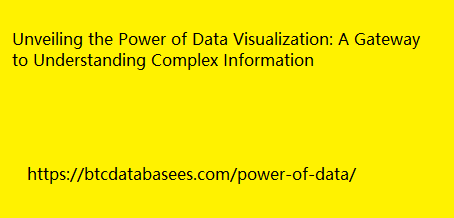
CFADB7 can be a valuable tool b2b lead generation meaning for WordPress users struggling to manage contact form submissions effectively. Here’s how to determine if it’s a good fit:
- Your Current Lead Capture Process: If you rely on emails for contact form submissions and find it cumbersome to manage, CFADB7 offers a more organized solution.
- Need for Advanced Lead Management: If you require features like advanced search filters, data export, or lead scoring, the Pro version of CFADB7 can significantly enhance your workflow.
- Technical Expertise: CFADB7 is considered user-friendly, but basic WordPress knowledge is recommended for installation and configuration.
Beyond CFADB7: Exploring Alternatives
While CFADB7 is a popular choice, other Contact Form 7 database extension plugins exist:
- WPForms: A premium option offering advanced form creation capabilities and database integration.
- Gravity Forms: Another premium plugin known for its powerful form builder and robust database integration features.
Conclusion: Streamline Your Lead Capture with Confidence
By leveraging Contact Form Advanced Database, you can transform your WordPress website’s lead capture process. This powerful plugin empowers you to effortlessly collect, organize, and manage valuable lead data, allowing you to focus on nurturing leads and converting them into customers. Consider your specific needs and explore the free and Pro versions of CFADB7 to see if it can become the key to unlocking a more efficient and organized lead management system for your WordPress website.


